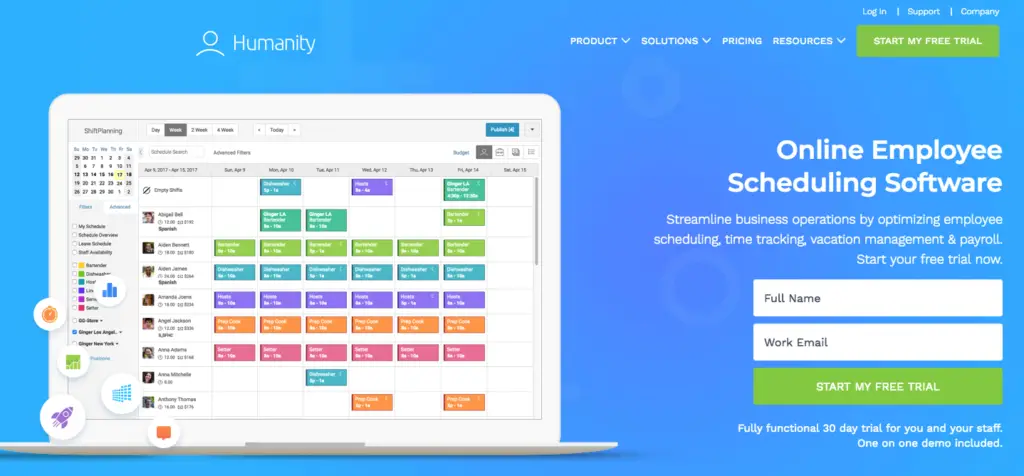

#Top employee scheduling software software#
Is it flexible? Every organization’s schedule is unique, so template-based software won’t work well for most teams.A software development company that offers training and ongoing support helps make the transition to an online solution even easier.
:max_bytes(150000):strip_icc()/Homebase-e88e20b376fe42d49a5da8945337502d.jpg)
Additionally, complex software or systems that require customer support for basic functions result in frustration for your team, which can lead to low morale and decreased productivity.

Look for scheduling software that is intuitive and easy to navigate. If you are ready to transition to an online system, keep in mind that managers and employees are more likely to be on board with a system that makes life easier from the get-go. Often, they are doing so simply because that’s how it’s been done for years, and managers believe it’s the fastest way to get the job done. Is it easy to use? Many organizations are still using pen and paper or spreadsheets to schedule employees.Here are eight things to consider when you are evaluating which solution best meets your organization’s specific scheduling requirements. But with so many software options available, how do you know which program is right for your organization? Eight Things to Consider When Selecting Scheduling Software for Your Operation These systems are designed to automate the staff scheduling process, and many include tools that help improve communication and manage labor costs. To simplify the scheduling process, and give managers time to focus on day-to-day operations, many administrators are turning to online employee scheduling software. Add in call-offs and filling open shifts, and it’s easy to see why managers can struggle to keep up with other key responsibilities in addition to maintaining staff schedules. Compliance – Following local and federal staffing laws and regulations reduces legal exposure and helps you avoid penalties and expensive fines.īeyond creating the initial work schedule, managers spend additional time on other schedule-related tasks, such as managing schedule requests, making and communicating schedule changes, and ensuring every shift remains covered with the right number of people.Employee availability and preferences – Accommodating your team’s requests and creating schedules that promote work-life balance not only helps ensure everyone shows up for their scheduled shifts – it also increases employee morale, which, in turn, improves your bottom line.Staffing levels and manpower requirements – Understanding your operation and knowing how many employees are needed to meet the demands of your business without incurring unnecessary overtime is critical to building an effective schedule.Further coordination is required to ensure the schedule gets updated when necessary and that everyone has the most current information.īefore the initial schedule is built, several factors should be considered:

It’s no secret that managing employees’ schedules can be a time-intensive process.Ĭreating a work schedule that accommodates the needs of your employees while meeting the demands of your operation takes forethought and organization.


 0 kommentar(er)
0 kommentar(er)
